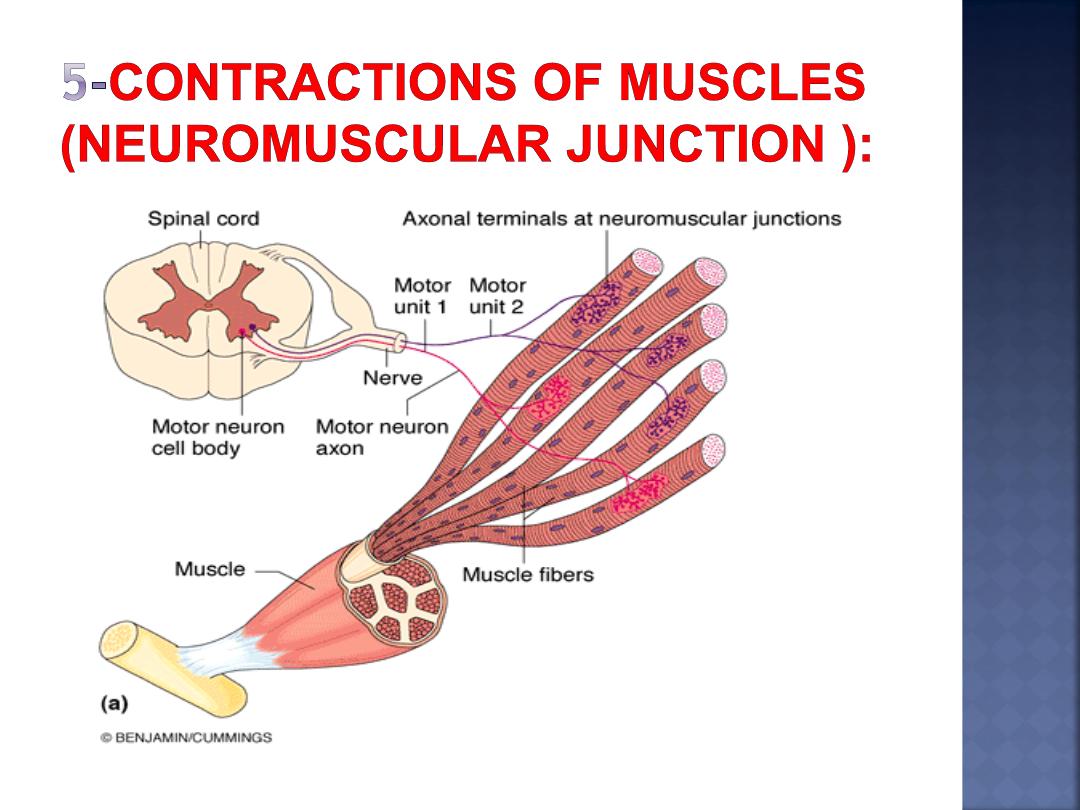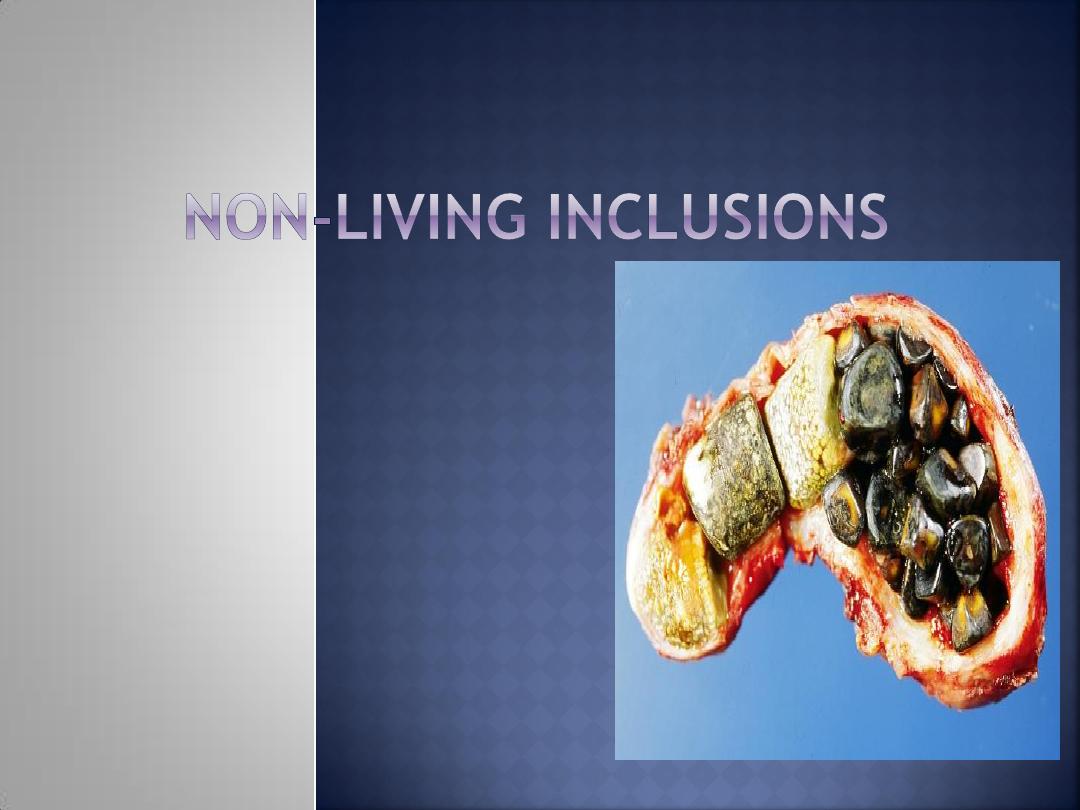
Dr. Shayma`a Jamal Ahmed
Prof. Genetic Engineering
& Biotechnology

At the end of this lecture the student will be
able to:
Define The Non-Living Inclusions .
Describe the types of Non-Living Inclusions .
List
Chemical classification of Non-Living
Inclusions
.
List the Cellular activity.

Any cell is a living organism as it requires
energy to survive. This energy is derived from
various metabolic processes within the cell.
Metabolism requires nutrients ( which need to
be taken up by the cell) and various enzymes (
catalysts) that actually digest the nutrients.
The enzymes are produced within the cell itself
from cell organelles, and the waste products
after the digestion are then removed by the
cell membrane. Like humans, cells will die if
they are not fed or watered, or their waste
removal systems malfunction.

Several compounds occur as non-living
inclusions in the cytoplasm. These inclusions
remain dispersed either in cell-sap or in
cytoplasm.
Some of them are useful for cell.
Take different shapes ,surrounded by
membrane.
The are several chemical compounds like
protein ,glycoprotein ,phospholipid, ect….

The most common inclusions are glycogen, lipid
droplets, crystals and pigments.
Glycogen
:
is the most common form of glucose in animals and
is especially abundant in cells of muscles, and liver.
It appears in electron micrograph as clusters, or
rosette of beta particles that resemble ribosomes,
located near the smooth endoplasmic reticulum.
Glycogen is an important energy source of the cell
therefore, it will be available on demand, the
enzymes responsible for glycogenolysis degrade
glycogen into individual molecules of glucose and
can be utilized by multiple organs of the body.

Glycogen storage disease :is
1.
Glucose-6-phosphatase deficiency is
Glycogen storage disease type Ia. Gene
map locus 17q21.
2.
Hepatorenal form of glycogen storage
disease.
3.
Hepatorenal glycogenosis.
4.
Von Gierke disease.
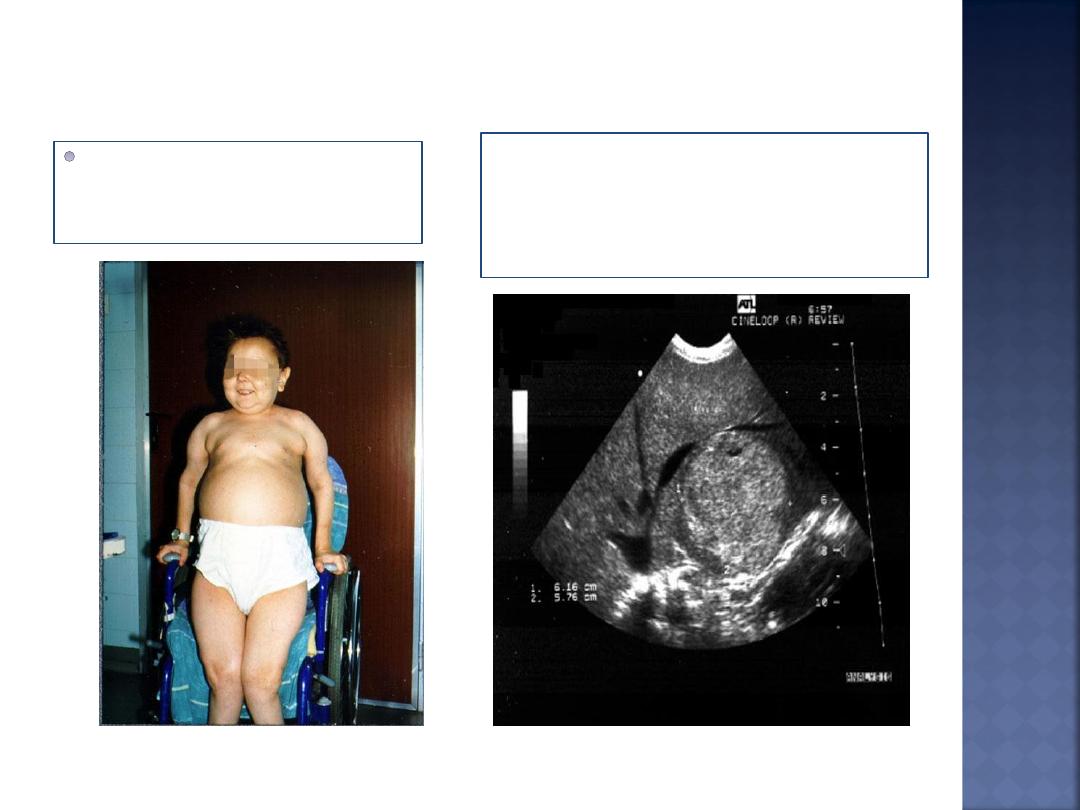
A child with Glycogen
storage disease type Ia.
Glycogen storage disease type Ia,
abdominal sonogram showing
large nodules in liver.

Lipids
:
are triglycerides in storage form is
the common form of inclusions, not
only are stored in specialized cells (
a dipocytes) but also are located as
individuals droplets in various cell
type especially hepatocytes.
These are fluid at body temperature
and appear in living cells as spherical
droplets.

Lipid yields more than twice as
many calories per gram as does
carbohydrate.
On demand, they serve as a local
store of energy and a potential
source of short carbon chains that
are used by the cell in its
synthesis of membranes and other
lipid containing structural
components or secretary
products.
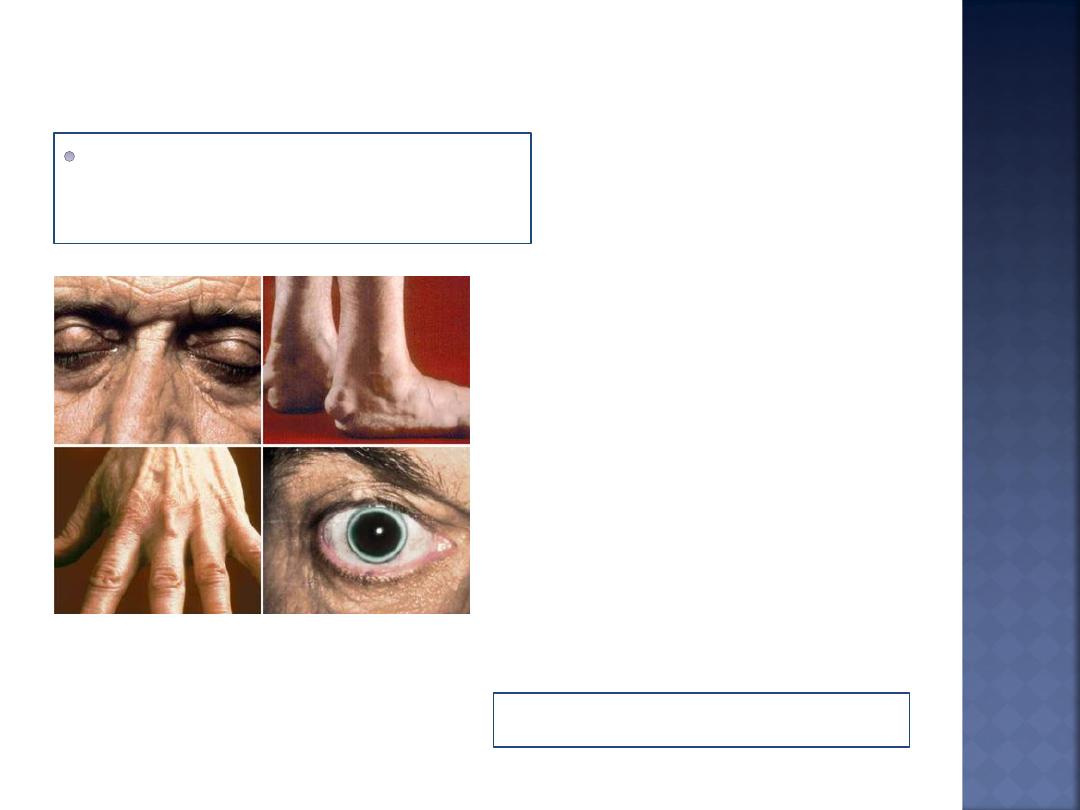
Lipid disorders
.
LIPID disorders are
important for these
reasons:
They contribute to
cardiovascular disease,
still the number one
cause of death in our
society, by aggravating
atherosclerosis.
They are common and
are treatable, mainly
with statins , which
have revolutionised
preventive medicine in
the last few decades.
.

Crystalline inclusions:
have long been recognized as normal
constituents of certain cell types such as
sertolli cells and leydig cells of the human
testis , and occasionally in macrophages.
It is believed that these structures are
crystalline forms of certain proteins which is
located everywhere in the cell such as in
nucleus, mitochondria, endoplasmic
reticulum, golgi body, and free in cytoplasmic
matrix.
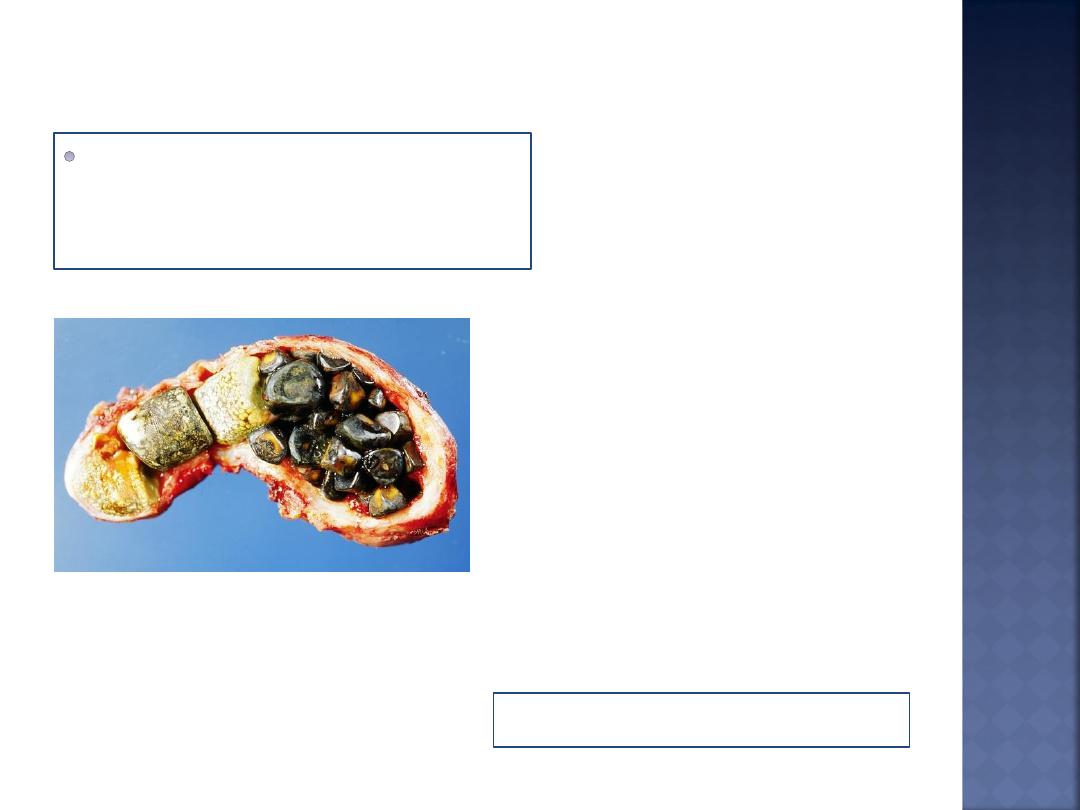
Gallstones
.
Gallbladder opened to
show numerous
gallstones.
The large, yellow
calculus probably
comprises cholesterol,
while the green-to-brown
stones suggest bile
pigments, such as
biliverdin and stercobilin.

Pigments:
The most common pigment in the body, besides
hemoglobin of red blood cells is melanin,
manufactured by melanocytes of the skin and
hair, pigments cells of the retina and specialized
nerve cells in the substantia nigra of the brain.
These pigments have protective functions in skin
and aid in the sense of sight in the retina but
their functions in neurons is not understood
completely. Furthermore, cardiac tissue and
central nervous system neurons shows yellow to
brown pigment called lipofuscin, some believed
that they have lysosomal activity.

Vitiligo of the hand in a person
with dark skin
Generalized pigmentation due to
Addison disease

There is anther classification as follows:
1)
Enzymes
2)
Hormones.
3)
Vitamins.
4)
Resduce of lysosome
5)
Crud materials.
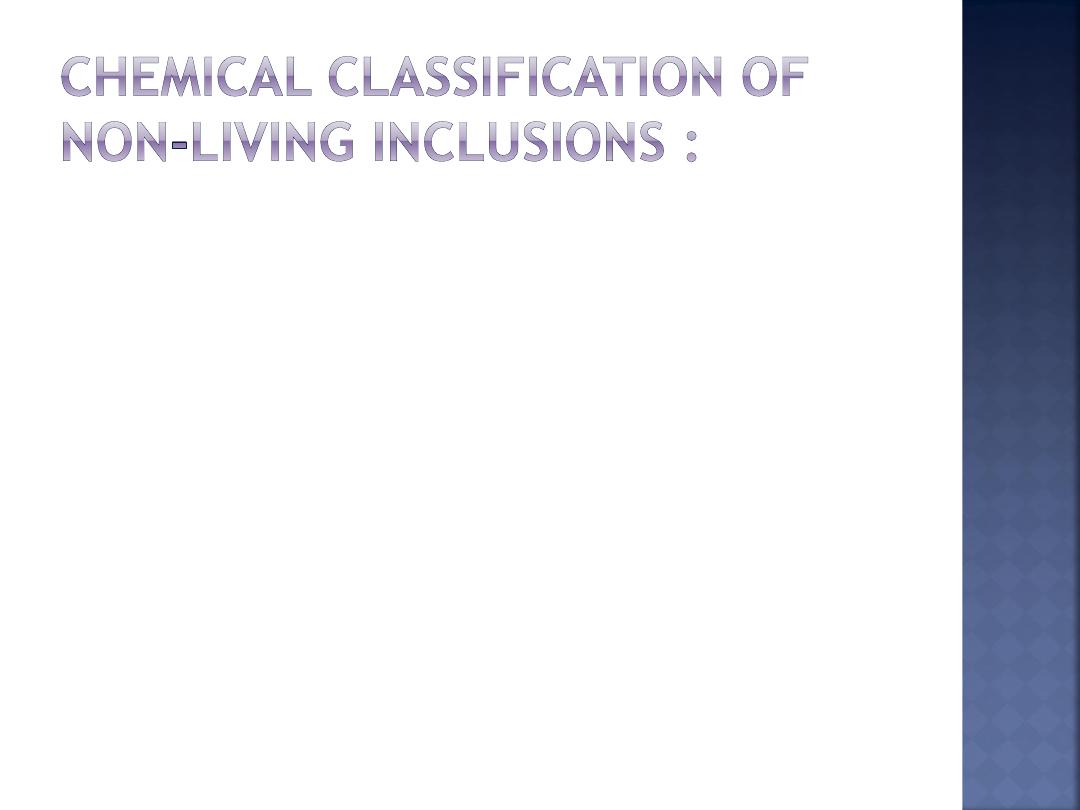
1- Food Products:
These are the substances manufactured by
the protoplasm of the cells from the simple
inorganic substances like carbon dioxide and
water and stored in the cells as food
materials.
The food thus manufactured is partly used up
to make new protoplasm and partly it is
broken down to provide necessary energy,
and remainder of it is stored as reserve food
material in protoplasm of cells.
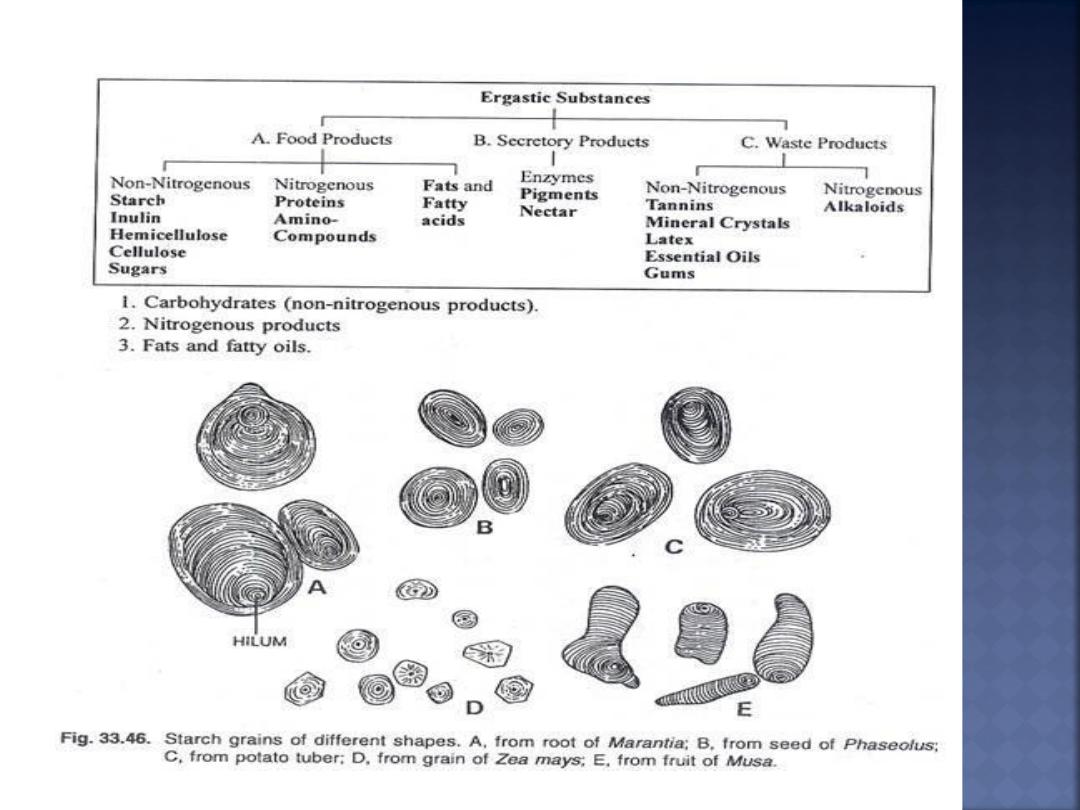

The reserve food materials may be classified
as follows:
A- Carbohydrates:
They are non-nitrogenous food products.
These are compounds of carbon (C),
hydrogen (H), and oxygen (O).
The most important products are:
1.
Starch
2.
Inulin
3.
Hemicellulose
4.
Cellulose
5.
Sugars
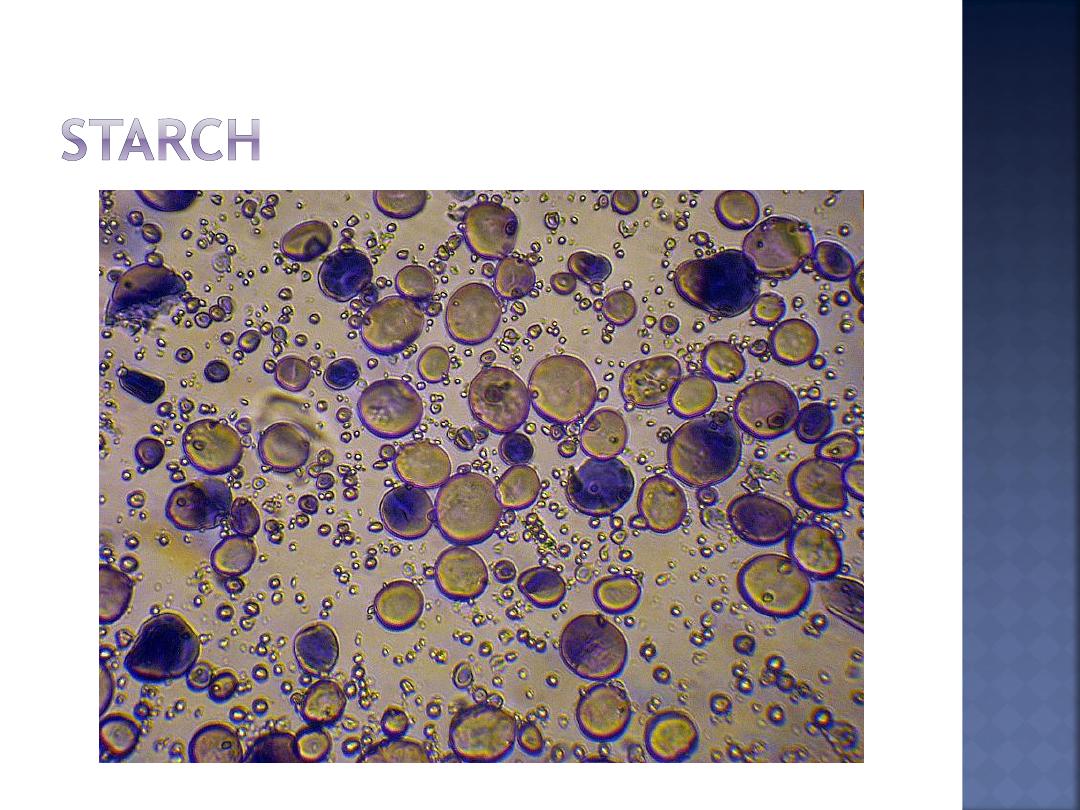

B- Nitrogenous Products:
(i)
Proteins.
(ii)
Amino compounds
c- Fats and Fatty Oils

2- Secretory Products:
(i)
Enzymes
(ii)
(ii) Color in cell
(iii)
(iii) Nectar
(iv)
Osmophors
3- Waste Products:
Usually there are two types of metabolic wastes.
They are:
1. Non- nitrogenous waste products
2. Nitrogenous waste products.

Which include:
1- Growth & Development
2- Cell division
3- Release of secretion
4- Transport of molecules
5- Contractions of muscles ( neuromuscular
junction )
6- Synthesis
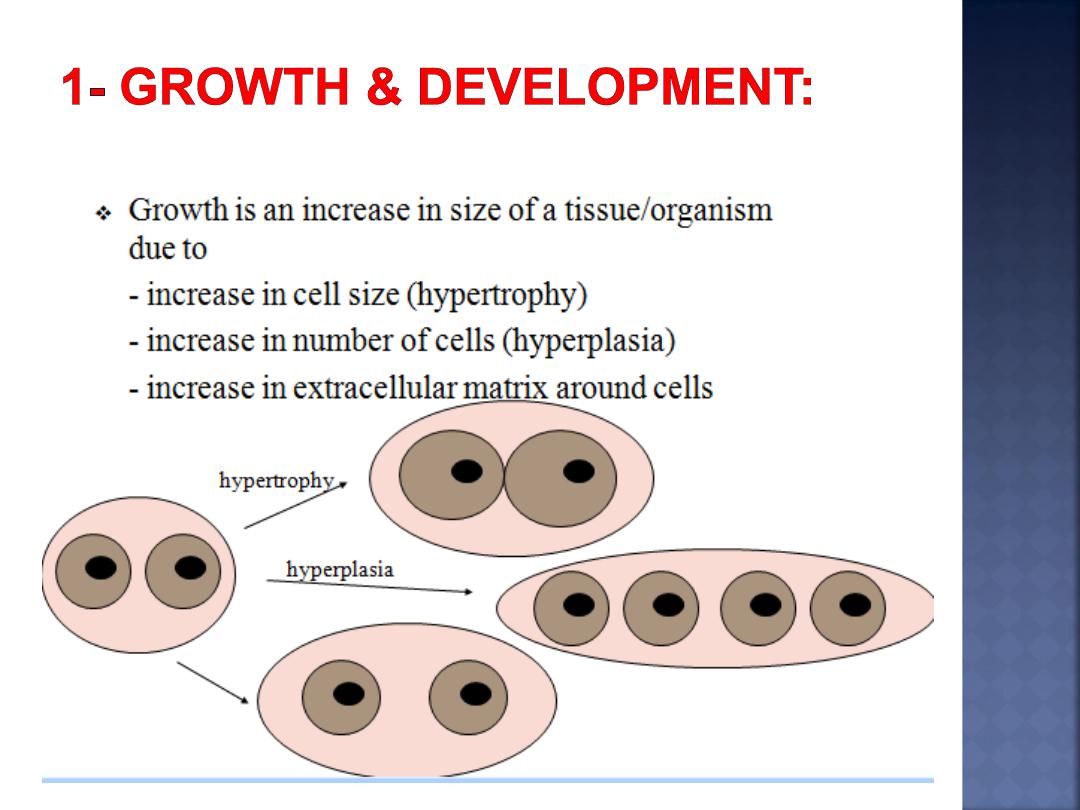

Many eukaryotic organisms do not exist as
one-celled bodies, and generally, the cells
multiply and develop into a more complex
organism. This development comes about by
way of two processes --
growth and differentiation
.

Including:
1- mitosis
2- meiosis.
During the growth process, cells
reproduce and grow more cells through
mitosis. This process occurs daily, and even
many times a day as cells continually need to
be replenished as others die.
Cells reproduce gametes (egg & sperm)
during meiosis.

Such as
Cytokine:
which is Secreted polypeptide or low
molecular weight protein involved in
cell-
to-cell signaling .
Acts in paracrine or autocrine fashion
through specific cellular receptors.
Can be produced by cells of any tissue
and act on many
cells involved in immune
and inflammatory response
.
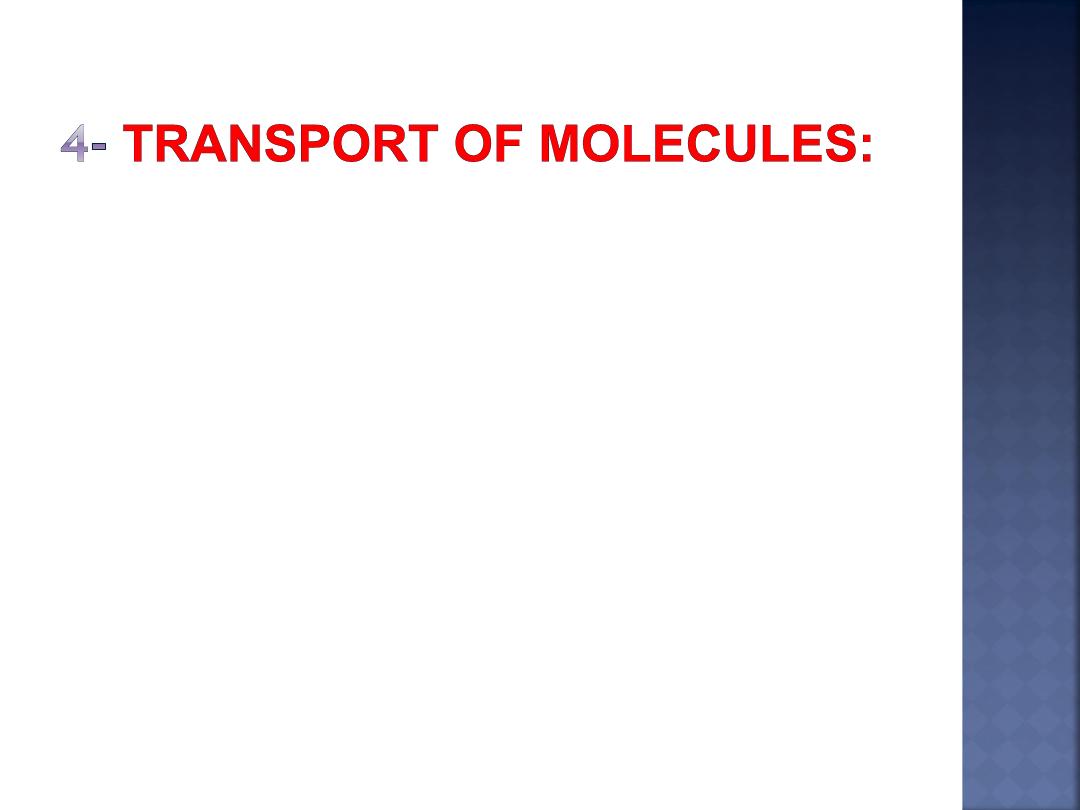
The cell employs a number of transport
mechanisms that involve biological
membranes:
1-
Passive diffusion & osmosis.
2- Transmembrane protein channles &
transporters.
3-Exocytosis.
4-Endocytosis.
